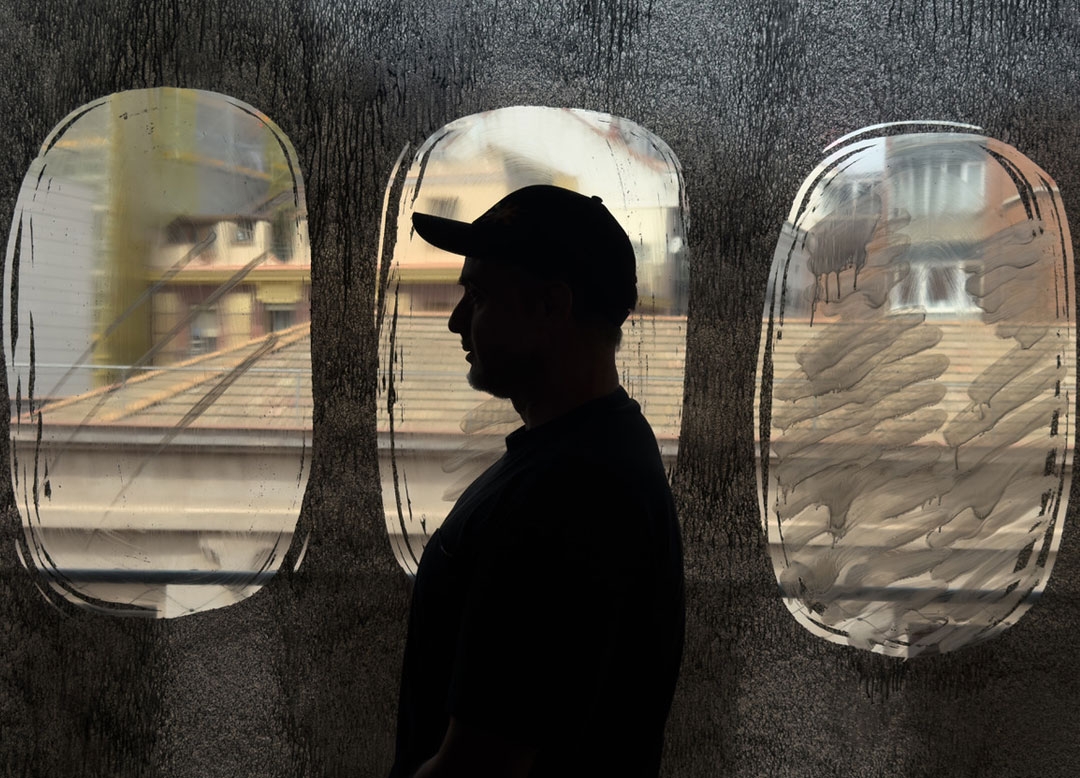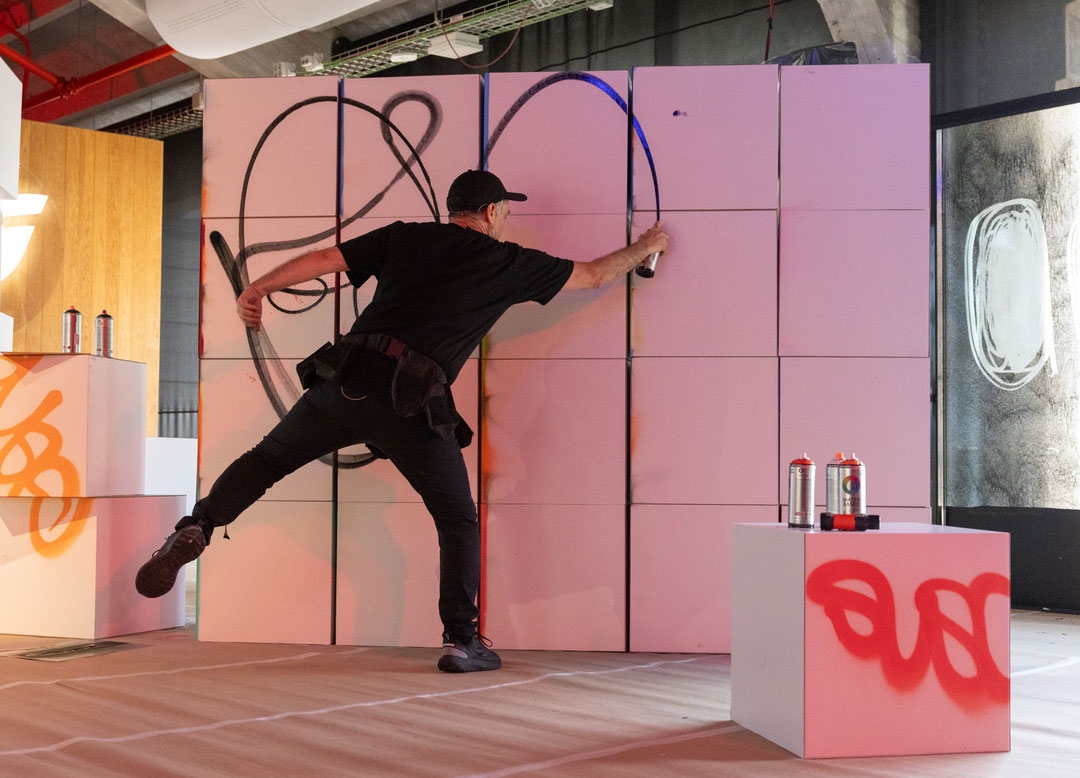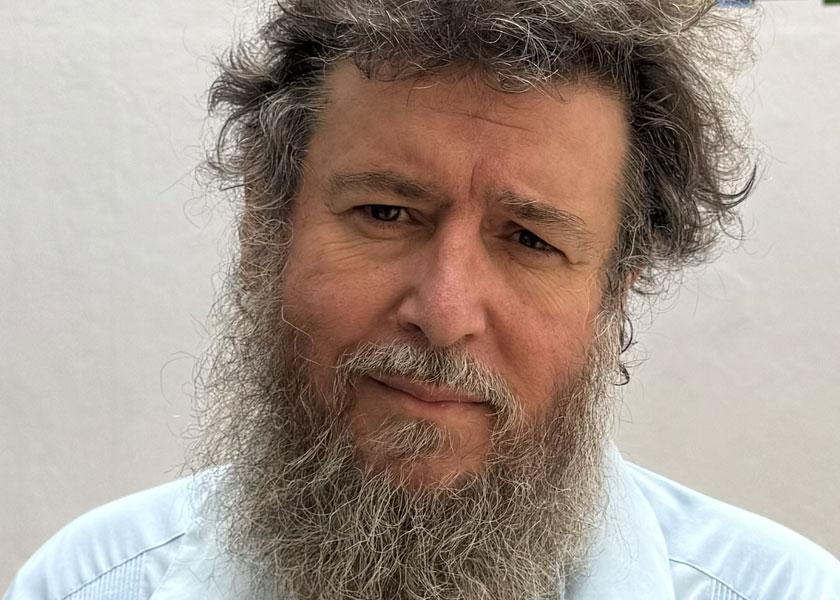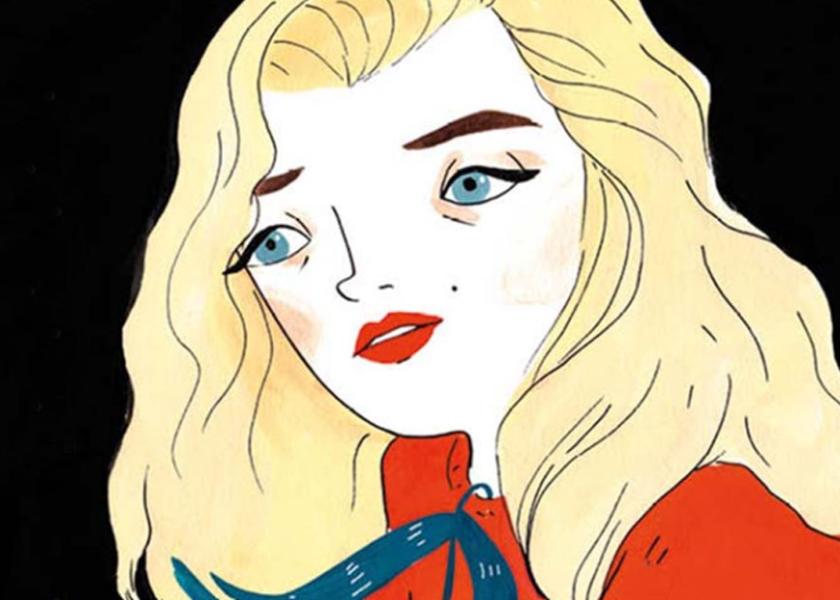Suso33
An art superhero
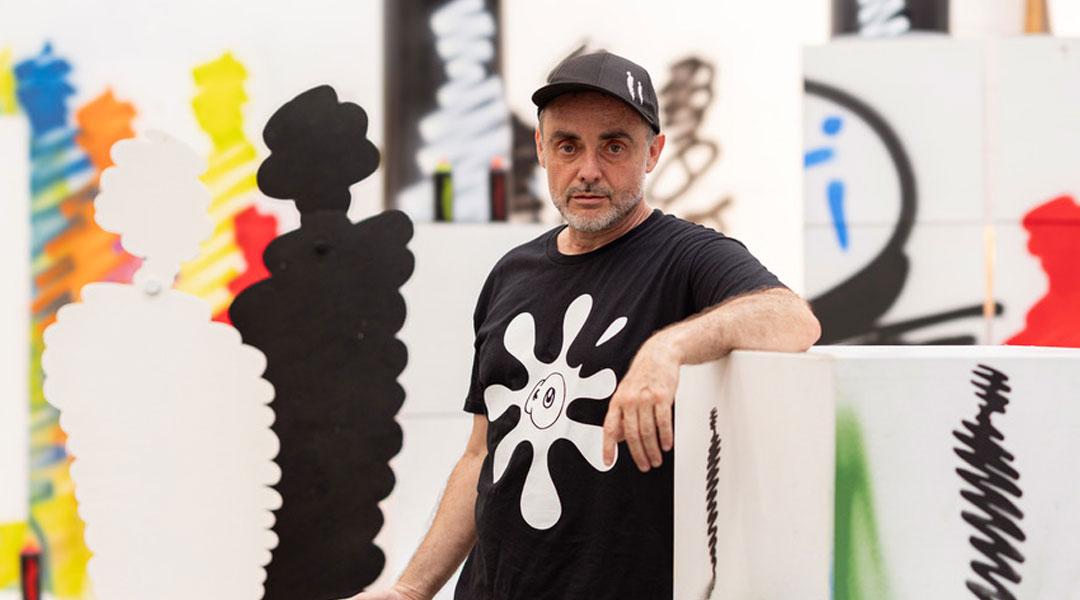
“Urban art is a synonym of talent because it requires intelligence, skill and attitude.” There’s no better person to declare this than Suso33, a role model in Spain, after his visit to Espacio Iberia Madrid. A defender of city as a live stage and always on the forefront of creativity, he defends the upcoming generation of urban artists: “Their works are remarkably fascinating.”
It was 1984 when a teenager called Jesús grabbed a spray can and painted his first graffiti. Since that day, graffiti has become his greatest ally to express himself and Jesús started to transform, even though he didn’t know it yet, into Suso33 (Madrid, 1973). “People call me Suso —minus the 33, which gets tedious— and that’s it. Nobody calls me Jesús,” he clarifies at the start of this interview. It also helped him get over some problems due to being left-handed and being forced to write with his right hand. “I turned a defect into a virtue,” he declares proudly. It’s almost a superpower because now that ability to work equally well with both hands allows him to go where others cannot. But the journey has not been easy, he reminds us: “Even though it sounds naive, in a way I feel connected to the world of superheroes. I discovered my talent because I didn’t have a comfortable life, and I forced myself to push myself and to keep people from walking all over me. Feeling lost made me walk down paths that I wouldn’t have walked down otherwise.” A talent which now, in his work as curator, he likes to help others discover: “I understand art as something communal, which is made with others rather than alone. This isn’t about looking at oneself, and that’s why I feel called to point out the value of others.”
At the age of 11, you were expelled from school for painting the walls. Do you remember what pushed you to pick up a spray can?
A need to express myself. As simple as that. While other children used to express themselves by playing, dancing or jumping around, I used to draw. I’m left-handed but was forced to write with my right hand, and that’s really tough on you as a kid, so I used to escape through drawing, and I’ve never stopped. I also discovered the wonder of graffiti, and hip-hop culture allowed me to grow.
Over time, you turned your experience of being left-handed but being forced to write with your right hand into a kind of superpower. Tell us the advantages it gives your work.
At the beginning, it was a problem, or that’s what I was made to believe. When I was little, using your left hand was frowned upon, but since it was an innate trait, I did some things with my left hand and others with my right. Now, when faced with a large piece, it’s useful because if I can’t reach a spot with one hand, I’ll do it with the other. I turn painting into a dance and I use my whole body. Before, I was told it was something bad, but in reality, I have twice the possibilities.
“If there are walls to creation, you have to jump over them, and that’s also what has allowed me to develop as a multidisciplinary artist”
Now you’re known as a plastic artist, muralist, video artist, stage designer, performer… But above all, are you still proud to be a graffiti artist?
I never abandoned that language and I still use it without permission in public spaces, but with respect and common sense. Under no circumstances can it be classified as an act of vandalism. Obviously, at the age of 52 it’s not the same as when you’re 11, but that’s the attitude that has kept my art alive. If there are walls to creation, you have to jump over them, and that’s also what has allowed me to develop as a multidisciplinary artist.
Your art has never been enclosed between four walls. Will the street always be your natural habitat?
Yes, my work is constantly on show and people can see the entire process, and that touches them because I’m not locked up in a studio deciding what to show and what not to show. By exposing myself so much, my ego gets set aside and that helps me connect with the audience. When I was at Espacio Iberia, people enjoyed themselves a lot because they witnessed the creative process, and that’s where mistakes and your most human side come into play. The audience is a big part of my work, and starting on the street has dispelled my fears and made me understand that mistakes are part of the process. It has also allowed me to pull art off its pedestal and make it more accessible, which is why I reach audiences of all ages, even people who think they have nothing to do with art.
Solitude is one of your artistic themes but, as we recently saw at Espacio Iberia, you like to surround yourself with people and share your creative process; why?
Yes, solitude is ever-present in my work. For example, in my series Ausencias. A person in society can be surrounded by people and, at the same time, incredibly lonely. For me, that dichotomy generates creative tension. When I’m creating, I like to be in touch with other people and build connections. I do lots of workshops with young people, sometimes in disadvantaged communities, and my motivation is social, human. The word “art” isn’t front of mind.
As the title of the Carlos Saura documentary that you starred in, Las paredes hablan says, walls can talk, but what do they say?
That’s a beautiful title. Carlos Saura had been documenting murals and graffiti for years as a cry in favour of freedom of speech; beyond the fact that people may like his messages or not, or they may be correct or not. Walls are alive, and sometimes they say things people don’t dare to say aloud. They’re like a journal of what happens, and I like it because it cannot be controlled.
“I’m amazed that something as ancient as painting walls is still so current. It’s something that has existed, exists, and will continue to exist. It’s alive and well”
From the first pictorial representations in prehistorical caves to today. Has painting on walls as a form of expression always existed?
The act of painting walls has always been an incredibly contemporary art form. It’s also universal. They say that it’s a fleeting art, but it’s paradoxical that the first samples that have been preserved are drawings on walls. I’m amazed that something as ancient as painting walls is still so current. And it works outside museums, institutions, galleries, collectors or markets. It’s something that has existed, exists, and will continue to exist. It’s alive and well.
You’ve witnessed urban art’s jump from the street to galleries. Do you see this as a triumph, or does it make you feel conflicted?
When I started, it wasn’t even considered art. Now, however, it has been more than integrated and is well valued. Since it’s a global movement, it’s logical that institutions look towards this type of art; the opposite would be concealing reality and the reason museums exist is to preserve knowledge for future generations. Galleries are not qualified to legitimize art. Moreover, perhaps their role has even been counterproductive in the history of graffiti and urban art. In my case, I don’t work with galleries because I work on projects without an end result; I’m more interested in the processes and tensions that are generated, creating and destroying in the moment.
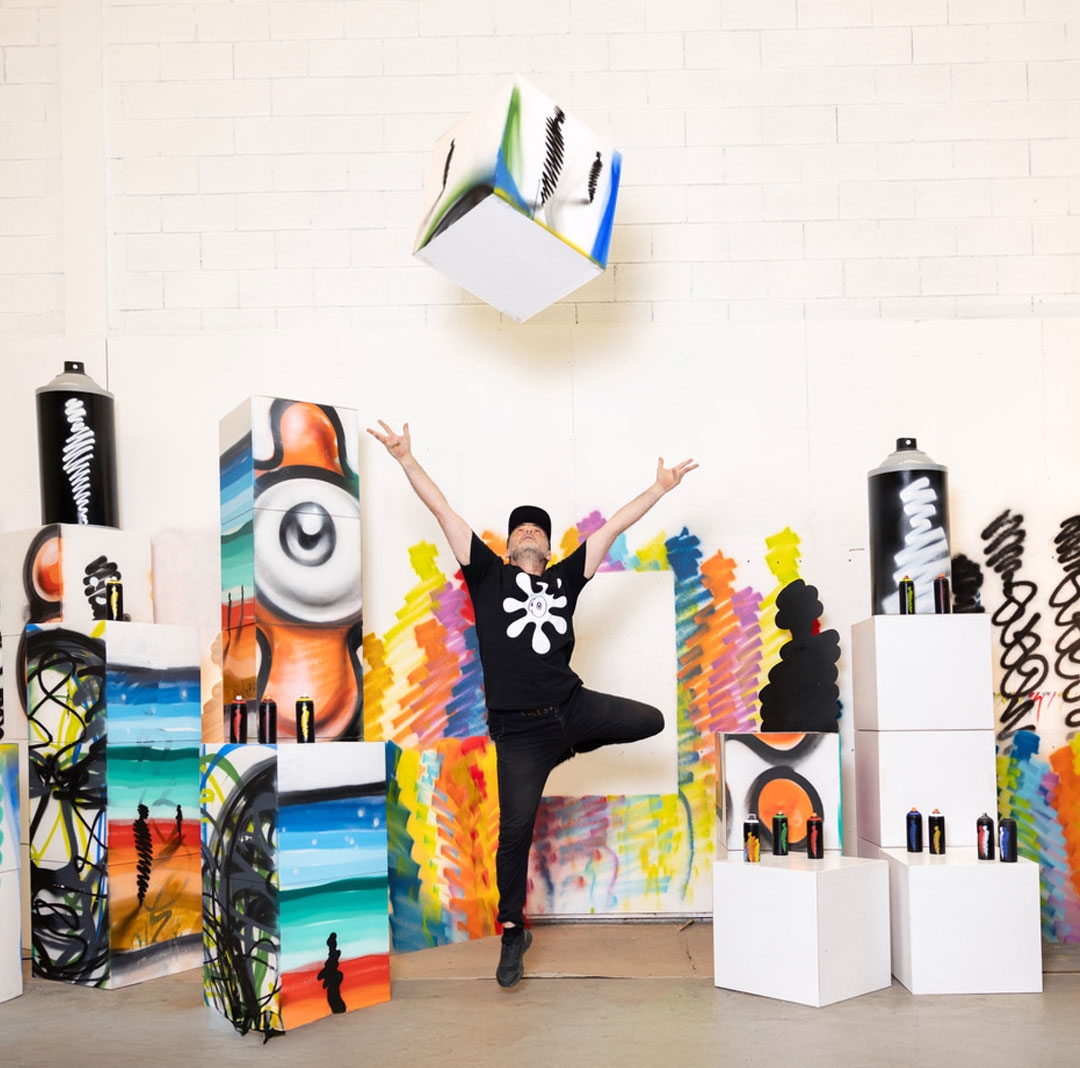
Suso33 dances with some of his most famous creations, such as the "plasta" or the "ausencias". © SelectorMarx
Because of that evolution, the situation is now vastly different from your humble beginnings. What do you think of the current urban art scene? Are the youngsters talented?
Urban art has always been a form of expression for talent. Spain is a leading country in terms of urban artists of all genders who have developed without following conventional paths. Currently, there are many talented young people proving their abilities and making a living out of them. Now, art also doesn’t need so many middlemen because it reaches people more directly through social media.
When we grow up, we stop drawing. This hasn’t been your case, and you also make a living out of it. Do you feel privileged?
The truth is, I look more successful than I am... Nobody gives you anything for free and everything I’ve achieved has been the result of a lot of hard work, perseverance, many mistakes, a lot of sacrifice, many regrets… It’s really tough, but I do feel privileged indeed.

